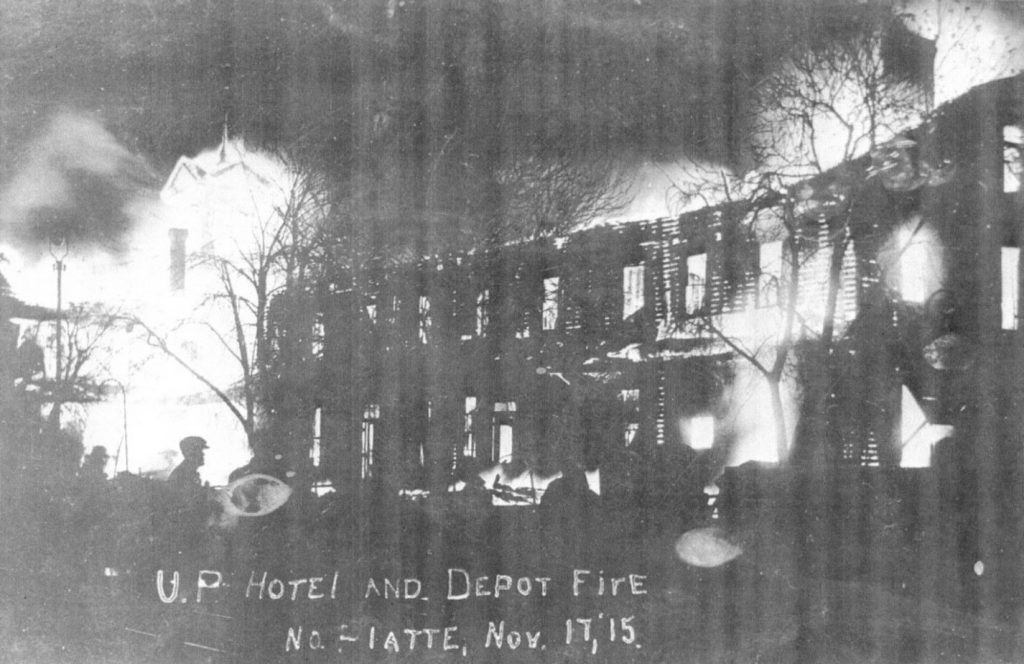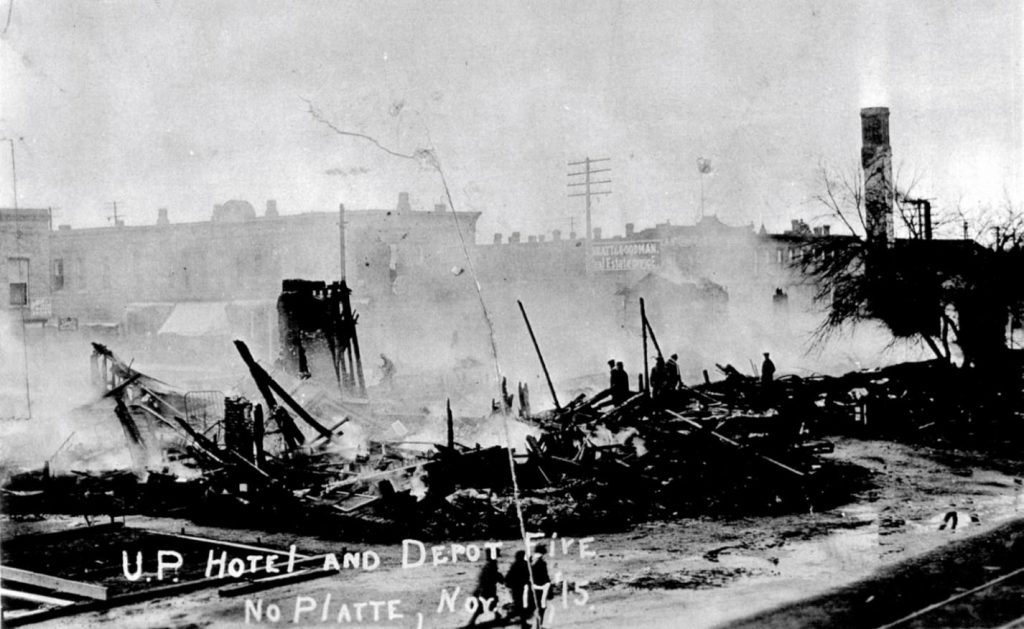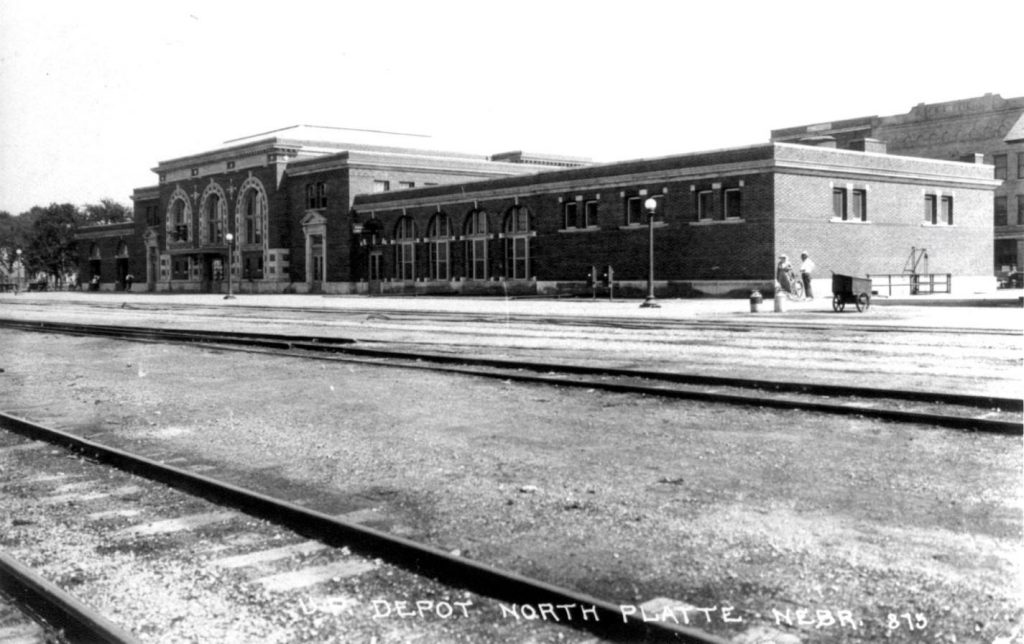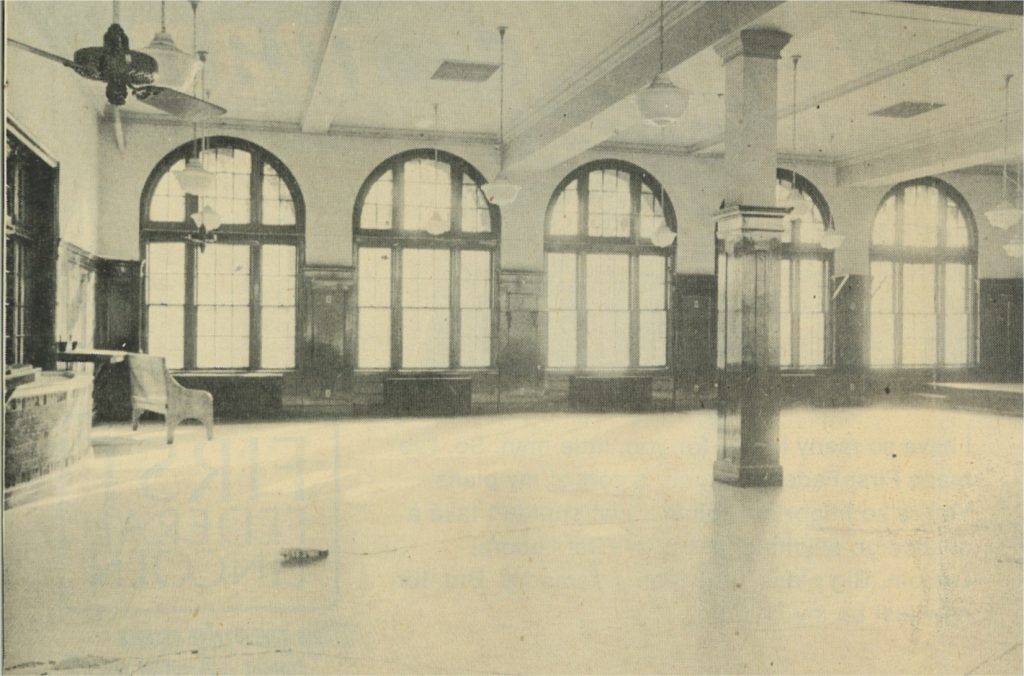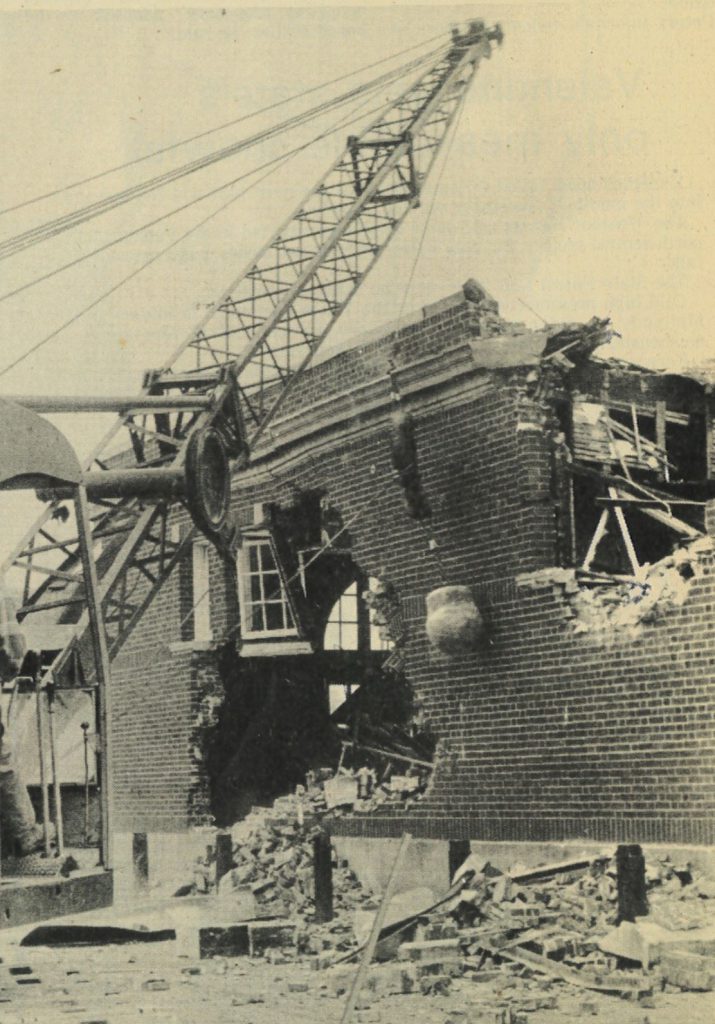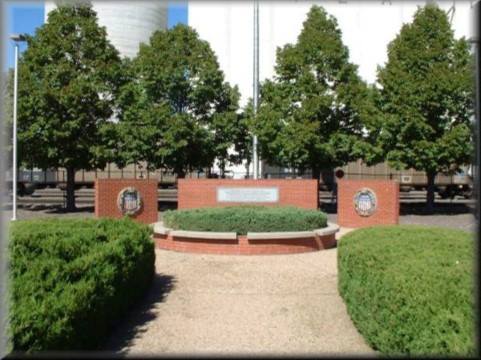Originally published to Facebook.com/NorthPlattePL on May 25, 2017
Today’s topic: The history of the Union Pacific Depot and Hotel; as well as the North Platte Canteen! Sadly, the Union Pacific Depot was torn down on November 2, 1973. It has been a source of controversy and gossip by locals for many, many years. Today’s view on the Depot is not to stir up the controversy, but to look at this unique building’s history. If you have a picture of the North Platte Depot and or the North Platte Canteen that has not been seen before, please drop by the library and talk with Kaycee Anderson. We would love to see your photos!
The Union Pacific Depot and Hotel was originally located on Front and Dewey Streets. It had many famous visitors, including William F. Cody (Buffalo Bill), the Grand Duke Alexis of Russia, George Armstrong Custer, Generals Sheridan and Sherman, Bat Masterson and Teddy Roosevelt. This depot and hotel opened in December of 1869 and was destroyed by fire on November 17, 1915. The first photograph is of the original wooden depot and hotel. The next photos show the fire and then the aftermath of the fire.
Shortly after the fire of 1915, the Union Pacific Depot was rebuilt at 300 East Front Street. The 4th photograph shows how the depot appeared shortly after its construction, in 1917. The 5th photograph shows the track-side of the depot. This beautiful new brick structure cost $160,000 in 1917.
The 6th and 7th photographs depict the famous North Platte Canteen as it appeared in 1944. The Canteen was located on the west end of the Union Pacific Depot and opened on December 25, 1941. The North Platte Canteen became a gathering place for over 6 million servicemen and women during the next 5 years. For those in the service, everything was free, including cigarettes, books, sandwiches, pie and birthday cakes. No single community could achieve what the North Platte Canteen did, it took the support of 125 communities in Nebraska and Colorado to make the legendary North Platte Canteen come alive. The Canteen closed its doors forever on April 1, 1946.
The building’s purpose returned to passenger rail service and offices for the Union Pacific Railroad.
On October 12, 1973, an article appeared in the North Platte Telegraph (here is a synopsis of that article): “As the depot sat empty, citizens tried desperately to find another use for the building. Union Pacific officials stated that all of the proposed uses for the building would have resulted in large numbers of persons occupying the building much of the time and due to the closeness of the building to the railroad’s main line, the safety of the people could not be guaranteed. Railroad officials stated the building was only used for offices since passenger service was eliminated in May 1971 and was no longer economical to maintain. Plans were made to tear the building down and develop it into a mini-park on the depot site. Nellie Yost (author of “Evil Obsession” worked for years with the Historical Society to save the depot.”
By October 30, 1973, Union Pacific was stripping everything out of the building in preparation to be razed. You can see the empty large room in photograph #8.
The 9th photograph shows the wrecking ball knocking down the walls of the canteen on November 2, 1973. Part of the plan when the depot came down was to erect a mini park and depot marker.
And the last two photographs are of the Depot Memorial and Canteen marker; which is all that remains of the North Platte Depot.
If you want to learn more about the North Platte Canteen, please consider reading Bob Greene’s book “Once Upon a town” and James Reisdorff’s book “The North Platte Canteen. The Lincoln County Museum also has a wonderful Canteen exhibit where you can learn more about the Union Pacific Depot and the History of the North Platte Canteen.
Copies of either book may be borrowed from the North Platte Public Library or purchased from A to Z books or the Lincoln County Historical Museum.
Source of the photographs:
“North Platte: City between Two Rivers” by Jim Beckius.
North Platte Genealogy Society.
North Platte Telegraph.

